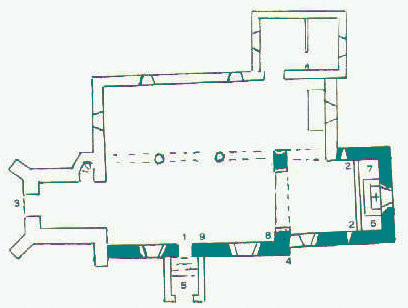 History Extra - The Building of the Church Tower
History Extra - The Building of the Church Tower
The earliest sign of habitation is a walkway of oak timbers near Agates pond in 'The Street' dated to the late Saxon period c. 972. The Church is in the Early English style with suggestions of Saxon and Norman influence in the architecture. The nave and chancel date from the middle of the 12th century; the 'unusual' tower was built in 1536 - 1538 at the expense of John Bolne. It boasts the oldest peal of eight bells in Sussex, the earliest being dated 1592.
The village almost certainly owes its existence and its apparent wealth to the early iron industry. Situated on the lower slopes of the Weald and St. Leonards Forest, it was ideally suited to providing the charcoal needed to fire the furnaces at nearby Cuckfield, Slaugham and Lower Beeding. 'Colwood Lane' and 'Cross Colwood Lane' in the north west of the parish are evidence of the burning of charcoal in quantity.
Following the decline of the iron industry, Bolney became an agricultural community, lasting about 400 years up to the period soon after the Second World War. Sadly the Windmill and the Watermill, both of which operated in the 18th and 19th century, are not standing today.
The gradual decline in agriculture has lead to the village being primarily a rural dormitory village, with many inhabitants working in the nearby towns of Haywards Heath, Burgess Hill, Crawley, and Brighton. Easy access to the M23 and mainline station Haywards Heath to London Victoria result in many residents regularly commuting to either Gatwick Airport or London.
 The old Inn in the village street opposite the steps up to the church is appropriately called The Eight Bells.
The old Inn in the village street opposite the steps up to the church is appropriately called The Eight Bells.
The pub sign was undoubtedly inspired by the church, for this has eight bells and has long been famous for its bell-ringing.
Lucas quoted an older writer saying: 'Those who are fond of the silvery tones of bells may enjoy them to perfection by placing themselves on the margin of a large pond, the property of Mr. W. Marshall: the reverberation of the sound, coming off the water, is pecularly striking.'
The church, mostly 14th-century, is set immediately behind and above the houses in The Street, with the visitor passing through a handsome lych-gate 'made of Sussex oak, Sussex marble, Sussex millstones and Horsham stone', erected in 1905.
Plan of the Church
| Chancel & Nave | c. 1100 |
| Tower | 1536-8 |
| South Porch | 1718 |
| North Aisle | 1853 |
| Organ | 1902 |
| Vestry | 1912 |
| Nave/Tower Oak Screen | 1949 |

| 1. South Doorway | 2. Both round headed windows |
| 3. Arms of John Bolney, etc | 4. Both scratch dials |
| 5. Plaque in Porch | 6. Piscina |
| 7. Two Old Brasses | 8. Huthson's Memorial |
| 9. Arms of Queen Anne (Wood Panel) |

